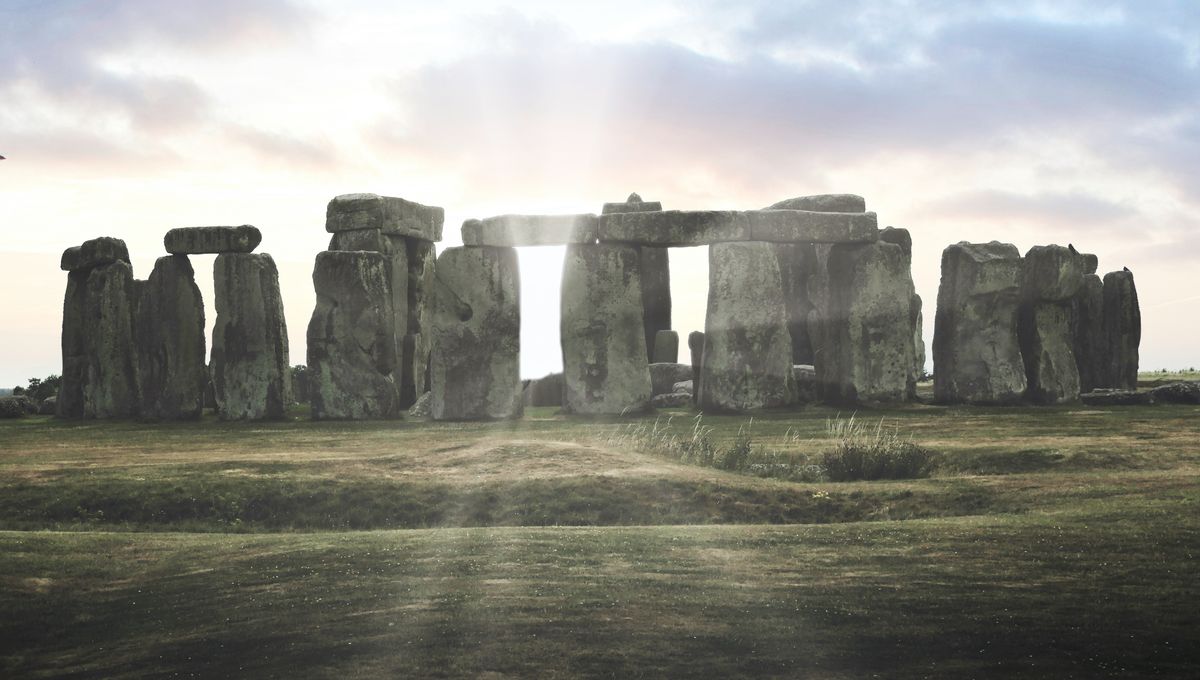
Researchers believe they may have solved the riddle of Stonehenge’s Altar Stone, suggesting that the enigmatic megalith was constructed as part of an attempt to protect the identity of Neolithic Britain during a period of increasing immigration from Europe. By building the monument using colossal stones from hundreds of kilometers away, the creators of the ancient landmark may have hoped to unify the nation, but were ultimately unsuccessful as the island’s Indigenous population was eventually replaced by the new arrivals.
The new theory follows the recent discovery that the six-ton Altar Stone at Stonehenge was originally sourced in northern Scotland, some 700 kilometers (435 miles) from the site itself in Salisbury, southeast England. Prior to this revelation, it had been well established that the monument’s “bluestones” came from Preseli Hills in Wales, around 225 kilometers (140 miles) away, while the larger sarsen stones were quarried 24 kilometers (15 miles) to the north of Stonehenge.
“The fact that all of its stones originated from distant regions, making it unique among over 900 stone circles in Britain, suggests that the stone circle may have had a political as well as a religious purpose – as a monument of unification for the peoples of Britain, celebrating their eternal links with their ancestors and the cosmos,” explained study author Professor Mike Parker Pearson in a statement.
In contrast, other prehistoric megaliths across Britain and Europe tend to be made from rocks transported from an average of just 7 kilometers (4.3 miles) away. According to the researchers, Stonehenge stands out “as a monument whose builders attempted – ultimately unsuccessfully – to establish some form of political unification and shared identity across much or even all of Britain, bringing together these extraordinary and alien rocks which symbolised and embodied far and distant communities.”
For instance, they speculate that “the Altar Stone was brought as a contribution or gift by the Neolithic people of northern Scotland, perhaps to cement an alliance or to take part in the extraordinary long-distance collaboration that building Stonehenge represented and embodied.”
Commenting on this incredible ancient undertaking, Parker Pearson said that “the similarities in architecture and material culture between the Stonehenge area and northern Scotland now make more sense.” For example, the authors point out that dwellings in the Neolithic village that housed the workers who built Stonehenge are remarkably similar in layout to ancient homes in Orkney from around the same period, highlighting an ancient cultural link between southern England and northern Scotland.
The massive, horizontal Altar Stone itself also mirrors the size and orientation of similar blocks at the recumbent stone circles that are only found in northern Scotland. Moreover, the graded height of these Scottish monuments – which are lower towards the north-east and higher to the south-west – is also reflected in the arrangement of the sarsens at Stonehenge.
Putting the pieces together, the study authors suggest that the Altar Stone probably arrived at Stonehenge during the second stage of the landmark’s construction. This chronology matches up with a substantial population upheaval, as immigrants with steppe ancestry flocked to Britain from mainland Europe, impacting the genetic and cultural heritage of the island’s insular Neolithic society.
“The Altar Stone’s incorporation into Stonehenge as an attempt at unity may have been a response to a legitimation crisis brought on by this influx of new people,” write the researchers. Unfortunately for this Indigenous British population, however, they were entirely replaced by the steppe-derived culture by the time Stonehenge was completed.
Delivering a damning final word on this ambitious program of political consolidation, the authors state that “as an attempt at unification, Stonehenge was ultimately a failure.”
The study is published in the journal Archaeology International.
Source Link: We May Finally Understand Why Stonehenge Was Built